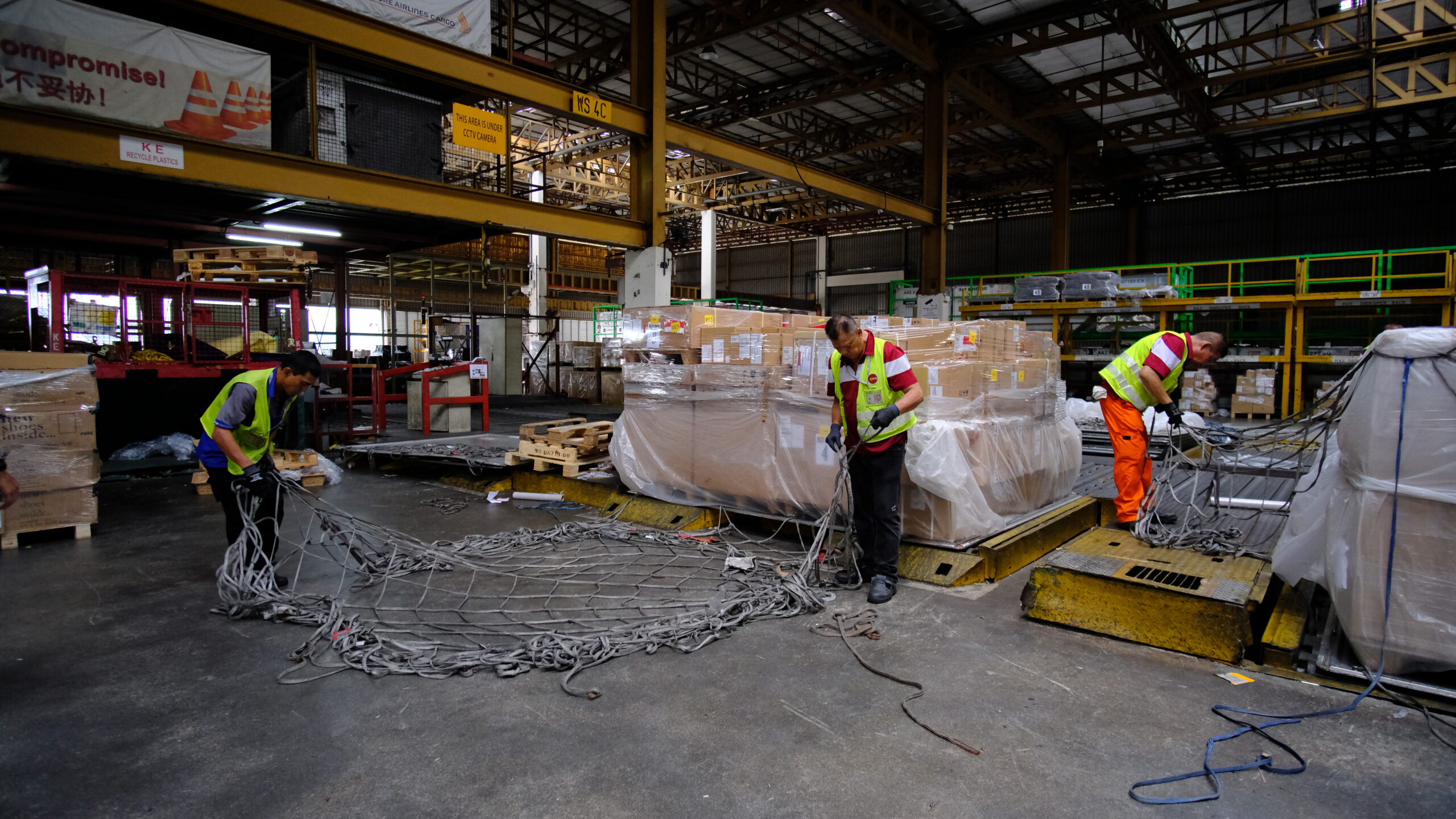The airfreight industry is at a crossroads. Airlines and ground handlers have an opportunity to digitally transform their operations in response to major headwinds. While this thinking is sound – they do indeed need technology to thrive in the post-pandemic world – the solutions adopted so far offer limited benefits because they only focus on one aspect of digitalization.
Airlines and ground handlers may want to consider solutions that not only digitize paper-based processes, but also physical workflows. These technologies can streamline existing processes for the benefit of all stakeholders in the aviation value chain.
Such a dramatic shift from the status quo is, of course, not straightforward. It is imperative for the leaders in the airfreight industry to acknowledge that the sector is at a tipping point, one brought on by the various headwinds stalling their progress, like labor, cargo volumes, and infrastructure that we will highlight below. These companies may wish to bring more strategic thinking to their technology: It could be their make-or-break moment.
Airlines are flying below capacity.

Source: Pexels
The airfreight industry needs to innovate its approach to airfreight. Per one estimate, airlines are flying with 30% of their capacity underutilized. While some airlines may be content to eat this loss as the cost of doing business, there is enormous opportunity here. If an airline were to maximize this underutilized capacity, they would save 1 flight for every 7 to 8 flights.
This optimization would not only be good for the environment – airlines would have the same cargo volume throughput with less of a carbon footprint – but it would also be good for business. As a whole, the airfreight industry would gain US$2.5 billion in unrealized revenue for every 3% improvement in capacity, which is a total opportunity of US$25 billion.
In fact, software is an especially valuable investment: With optimization, airlines can see up to a 30% increase in efficiency. These gains are made possible through two improvements. On a unit level, these solutions can help maximize cargo sales and capacity on every flight by providing accurate shipment evaluation during the booking process. On a macro level, they provide airlines complete visibility on their global cargo operations, giving them the power to orchestrate their operations.
Going green by being more resource efficient is itself a boon for business: Study after study has shown that enterprises prefer availing of services from organizations that care about their environmental impact.
Labor shortages are reaching new highs.

Source: Pexels
According to Oxford Economics, the aviation industry has lost 2.3 million jobs since 2019. While the impact on the passenger side of the business tends to be the focal point of this narrative, the lynchpin of this shortage is overlooked professions, such as cargo ground handlers. This shortfall will only get worse in time — the aviation workforce is aging, and younger employees have demonstrated less interest in the space, owing to a system that has under-valued cargo handling as a service.
This labor shortage can be offset with technology. Fewer ground handlers can perform the same level of work or even achieve greater productivity, so long as they are equipped with the right tools. Furthermore, because younger generations prefer working with digital processes rather than labor-intensive jobs, digitizing workflows would retain manpower and eventually even attract new talent to the sector. But this virtuous cycle is not what is happening in practice.
Unfortunately, problems persist even in better times: When volumes have been high, the infrastructure has not been capable of supporting it. In November 2020, there was a small decline in cargo volume. This trend was not due to a lack of demand – it was the height of the pandemic, after all, when goods were at a premium – but due to a “lack of investment” in cargo infrastructure, which caused inefficiencies and congestion in an increasingly “fragile” situation. Ground handlers pointed the finger at freight forwarders, and weary travelers documented pallets and containers idling on the tarmac.
Since the pandemic, the airfreight industry has been characterized by further volatility in cargo volumes, which IATA has attributed to global economic forces such as “tightening global financial conditions, high levels of global debt, and supply chain problems including those linked to the war in Ukraine.” In the face of this labor shortage, deteriorating infrastructure, and fluctuating cargo volumes, ground handlers need solutions that are data-centric to identify bottlenecks, enhance productivity, and maximize resource utilization. For example, with new data, ground handlers can pinpoint steps in workflows that would benefit from automation, intelligently store cargo for flexible and dynamic loading, and ultimately improve operational efficiency even with less manpower. In turn, ground handlers can provide cutting-edge, data-driven solutions to their clients.
Clear Skies Ahead: Rethinking Airfreight Operations for a New Era

The sector, in short, is at a tipping point. For airlines and ground handlers to remain competitive within the airfreight industry, they need to choose the right technology, one that digitizes physical workflows, and not just paper flows.
With a data-driven solution, ground handlers can mitigate the labor shortages and deteriorating infrastructure that have been plaguing their space in recent years. For their part, airlines can maximize the unutilized capacity that is currently hovering at a disturbingly high 30%.
The lynchpin in any compelling solution is data. At Speedcargo, for instance, we produce a suite of solutions – Amplifi, Cargo Eye, Assemble, and Cargo Arm – that leverage data in service of increasing efficiency, automation, and most crucially, revenue. Organizations forward-thinking enough to make this transition will – to use a fitting metaphor – soar above the competition.





